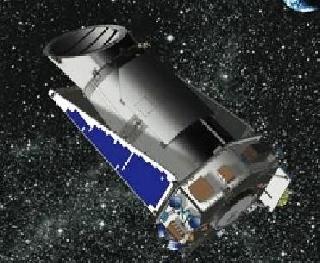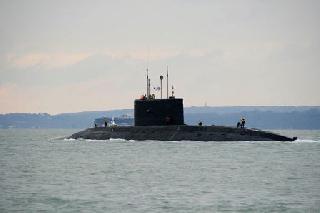
The Kepler spacecraft. A NASA image
WASHTINGTON (AFP): NASA said Thursday it cannot fix its hobbled planet-hunting Kepler Space Telescope and is considering what sort of scientific research it might be able to do at half-capacity.
"Today, we are reporting we do not believe we can recover three-wheeled operations, or Kepler's original science mission," said Paul Hertz, NASA Astrophysics Division director.
"So the Kepler project is turning its attention to studying the possibility of two-wheeled operations," he said, referring to the wheels the craft uses to orientate itself.
The unmanned spacecraft launched in 2009 on a search for rocky planets orbiting in the habitable zones of Sun-like stars -- in other words, planets like Earth that might contain life elsewhere in the Milky Way galaxy.
It has so far found 3,500 planetary candidates including several hundred Earth-sized candidates from its first two years of data, according to William Borucki, Kepler science principal investigator.
Kepler has confirmed 135 of these exoplanets. A few appear to be close in size to Earth but are circling suns that are cooler than ours.
From its final two years of data -- already collected but yet to be analyzed -- "we expect hundreds, maybe thousands of new planet discoveries," said Borucki.
He said it will take up to three years to pore over the findings Kepler has collected through studying the distant signals of stars and planets crossing in front of each other, known as transits.
"We really expect the most exciting discoveries are going to come in the next few years as we search through all this data," Borucki told reporters.
"Now at the completion of Kepler observations, the data holds the answer to the question that inspired the mission: Are Earths in the habitable zone of stars like our Sun common or rare?"
In July 2012, NASA reported that one of Kepler's four reaction wheels, which help orient the spacecraft, had broken down, followed by a second in May this year.
One space agency scientist described the problem as like trying to push a grocery cart with a stuck wheel. Experts tried to fix it by reversing it, but it soon failed again and the motors were unable to keep the wheel going.
"The wheels are sufficiently damaged that they cannot sustain spacecraft pointing and control for any extended period of time," said Charles Sobeck, Kepler deputy project manager.
A pair of studies are expected to show in the coming months what sort of science might be possible with a hobbled Kepler.
Some possibilities include searching for comets or asteroids.
When those studies are complete, NASA will perform a cost-benefit analysis to determine whether research should continue with Kepler or if money would be better spent on other projects.
NASA has allocated $18 million to the Kepler project in fiscal year 2013. The overall mission to date has cost around $600 million.
Borucki said he was delighted, not saddened to see the spacecraft's initial mission coming to an end.
"When we conceived the mission it was sort of like I standing out in the desert and it was empty -- there was no knowledge of other planets," he said.
"Now I feel sort of like I am standing at the bottom of the ocean and I am just covered with an ocean full of data on all these possible planets."
 Previous Article
Previous Article Next Article
Next Article












The Indian Air Force, in its flight trials evaluation report submitted before the Defence Ministry l..
view articleAn insight into the Medium Multi-Role Combat Aircraft competition...
view articleSky enthusiasts can now spot the International Space Station (ISS) commanded by Indian-American astr..
view article